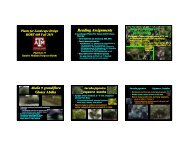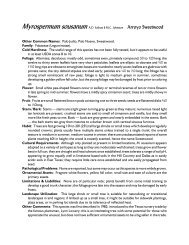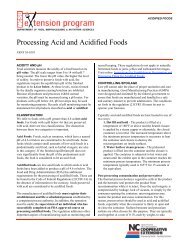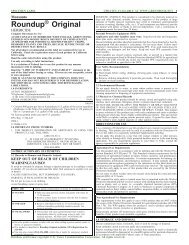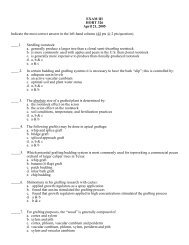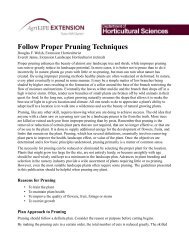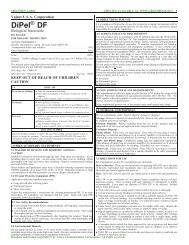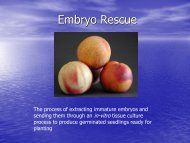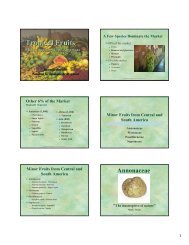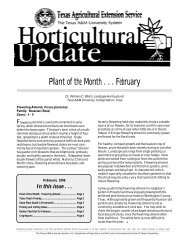Guide to PAS 2050 How to assess the carbon ... - Aggie Horticulture
Guide to PAS 2050 How to assess the carbon ... - Aggie Horticulture
Guide to PAS 2050 How to assess the carbon ... - Aggie Horticulture
Create successful ePaper yourself
Turn your PDF publications into a flip-book with our unique Google optimized e-Paper software.
<strong>Guide</strong> <strong>to</strong> <strong>PAS</strong> <strong>2050</strong> 1<br />
Introduction<br />
Climate change and product<br />
<strong>carbon</strong> footprints<br />
‘Carbon footprint’ is a term used <strong>to</strong> describe <strong>the</strong><br />
amount of greenhouse gas (GHG) emissions caused<br />
by a particular activity or entity, and thus a way for<br />
organisations and individuals <strong>to</strong> <strong>assess</strong> <strong>the</strong>ir<br />
contribution <strong>to</strong> climate change. Understanding <strong>the</strong>se<br />
emissions, and where <strong>the</strong>y come from, is necessary in<br />
order <strong>to</strong> reduce <strong>the</strong>m. In <strong>the</strong> past, companies wanting<br />
<strong>to</strong> measure <strong>the</strong>ir <strong>carbon</strong> footprints have focused on<br />
<strong>the</strong>ir own emissions, but now <strong>the</strong>y are increasingly<br />
concerned with emissions across <strong>the</strong>ir entire supply<br />
chain.<br />
Supply chain GHG emissions, which include those<br />
associated with processes not controlled by <strong>the</strong><br />
company itself, can be measured at ei<strong>the</strong>r <strong>the</strong><br />
company level or <strong>the</strong> level of an individual product.<br />
There are benefits <strong>to</strong> both company- and productlevel<br />
supply chain emissions <strong>assess</strong>ment; however,<br />
<strong>PAS</strong> <strong>2050</strong> and this guide focus on product-level<br />
emissions only.<br />
Measuring <strong>the</strong> <strong>carbon</strong> footprint of products across<br />
<strong>the</strong>ir full life cycle is a powerful way for companies <strong>to</strong><br />
collect <strong>the</strong> information <strong>the</strong>y need <strong>to</strong>:<br />
• Reduce GHG emissions<br />
• Identify cost savings opportunities<br />
• Incorporate emissions impact in<strong>to</strong> decision making<br />
on suppliers, materials, product design,<br />
manufacturing processes, etc.<br />
• Demonstrate environmental/corporate responsibility<br />
leadership<br />
• Meet cus<strong>to</strong>mer demands for information on product<br />
<strong>carbon</strong> footprints<br />
• Differentiate and meet demands from ‘green’<br />
consumers<br />
This guide uses ‘product’ <strong>to</strong> refer <strong>to</strong> both physical<br />
products (i.e. goods) and service products (i.e.<br />
services) throughout; any differences related <strong>to</strong><br />
services are highlighted in <strong>the</strong> text. Appendix II<br />
describes two examples of service <strong>carbon</strong> footprint<br />
<strong>assess</strong>ments.




